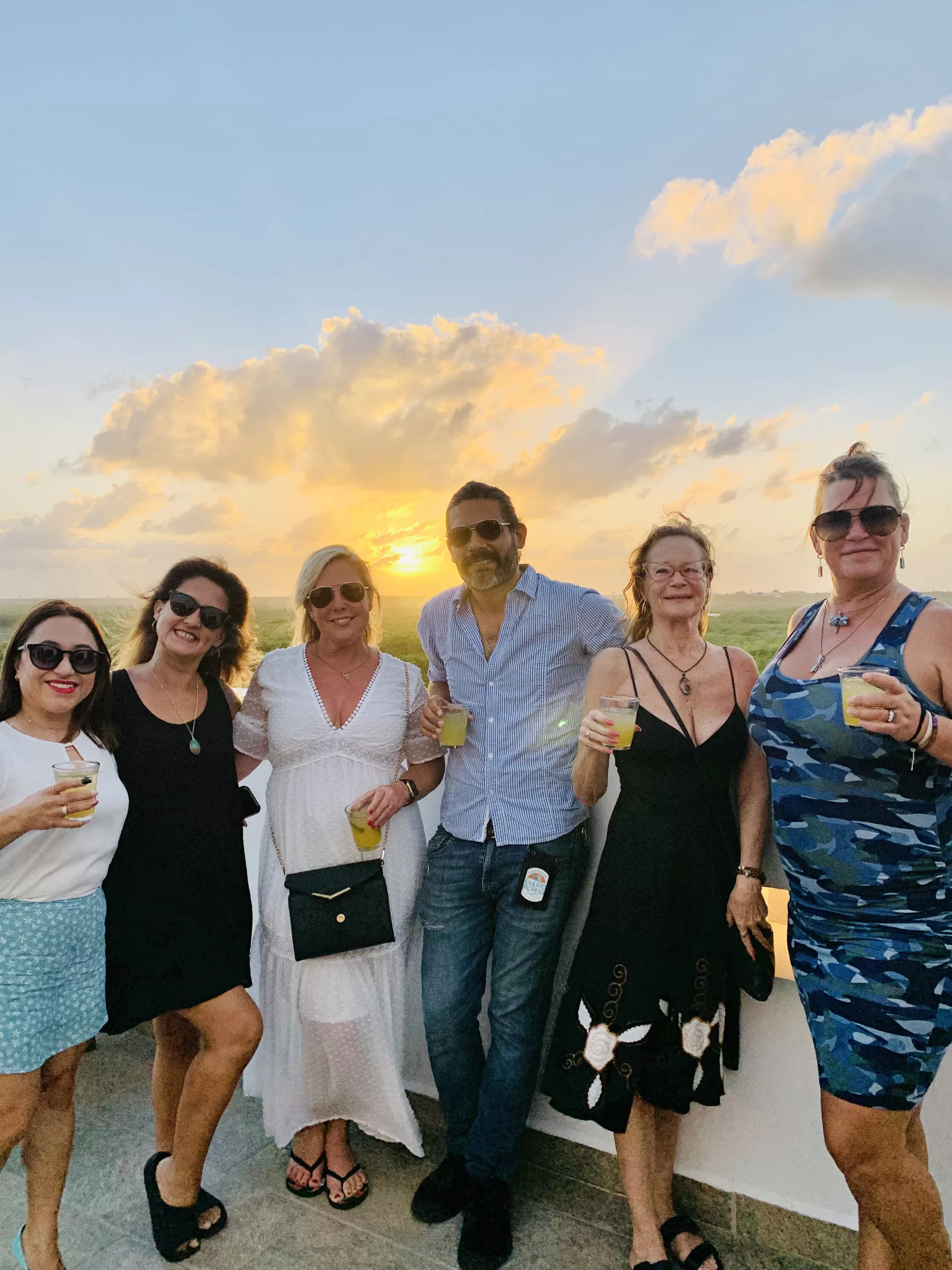Ostería Barocca y Don Mexkal se unieron para crear esta experiencia super completa de cata de mezcal. El evento se realiza en el roof de Ostería Barocca frente al arrecife de Puerto Morelos y comienza con una deliciosa Mezcalita de maracuya para disfrutar el atardecer sobre el manglar.

Osteria Barocca and Don Mexkal are joining forces to create this very complete mezcal tasting. The event is held on the rooftop of the Osteria Barocca in front of the Puerto Morelos reef and begins with a delicious passion fruit mezcal to enjoy the afternoon over the mangrove.
Don Mexkal presenta algunos mezcales de su producción, lo cual marca dos de los puntos destacables de la experiencia, que el mezcal utilizado es artesanal y que en cada cata probarás 3 o 4 agaves distintos de los 37 que existen.
Don Mexkal shares some artisan mezcals that they produce, which are two of the key points of the experience. At every tasting you will be able to try 3-4 mezcales from of the 37 different agaves that exist.


El equipo de XPM fue a vivir la experiencia el 22 de febrero de este año y nos tocó maridar con comida mexicana, una delicia todos los platos que presentaron, en 6 tiempos y además conocimos los secretos de este elixir típicamente mexicano. Nos tocó probar Mezcal de 3 tipo de agave: Tobalá, Espadín y Cuish.
The XPM team experienced the Mezcal Tasting on February 22 paired with Mexican food – every dish was delicious! There were 6 courses in total and we also learmed about this traditional Mexican elixir. During our visit, we tried 3 type of agave: Tobalá, Espadín and Cuish.
Además de aprender probamos los distintos acompañaientos que pueden estar en una noche de mezcales, como pueden ser tomates, pepinos, piña y su versión más conocida, la naraja. Claro que todo con un poco de sal de gusano para resaltar los sabores.
In addition to learning about the different types of agave, we also tried distinct dishes that can be included in a night of drinking mezcal, such as tomatoes, cucumber, pineapple and the most widely known, the orange. And we couldn’t forget to add some worm salt (sal de gusano) to highlight the flavors.

Por último les dejamos 2 curiosidades que nos sorprendieron muchísimo.
1. El mezcal llamado Pechuga, toma su nombre del proceso de destilación; esta se hace con una pechuga de pollo o de pavo colocado encima del alambique y cocinandose debido a los vapores que este mismo emite. De esta forma la pechuga colabora con el sabor. Segun Eater.com
2. Con los agaves que requieren muchos años de crecimiento de la planta antes de ser cosechado (hablamos de 30 a 40 años) únicamete se produce mezcal blanco y no sus versiones reposado y añejo.
Lastly, we’re leaving you with two interesting things that surprised us a lot.
1. “Pechuga” Mezcal gets its name from the chicken or turkey breasts in the process of creating the distinctive flavor. According to Eater.com, “Mezcal de pechuga (pechuga translates to breast in Spanish), is made when a finished mezcal is redistilled with local fruits, grains, and nuts, and a raw chicken or turkey breast is hung over the still, cooking in the emanating vapors, supposedly adding to the spirit’s final flavor.”
2. The agave plants that require many years of growth before they can be harvested (we’re talking 30-40 years!), are only used to produce mezcal blanco and not the reposado or añejo versions.




Upcoming Dates (Próximas fechas):
March 29th (29 de marzo)
April 12th & 26th (12 y 16 de abril)



Please contact Mina directly by clicking this link to see her profile and contact information.
Hola...can u tell me when u teach and where? Type of yoga ? Thanks so much